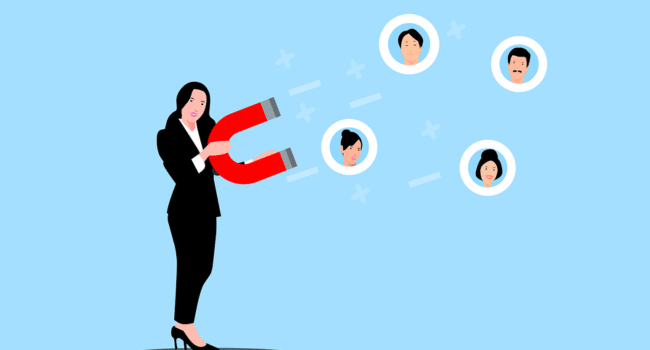Table of Contents
Standing out in today’s crowded digital marketplace requires more than just attracting customers. It demands meaningful customer engagement at every step of their journey. Many brands miss opportunities to connect deeply with their audience, relying on generic strategies that fail to create lasting impact.
By adopting innovative, data-driven approaches, businesses can deliver experiences that feel personal, timely, and relevant. In 2025, leveraging these modern engagement tactics not only strengthens relationships but also drives loyalty, repeat purchases, and advocacy.
This article highlights seven of the best customer engagement strategies you may not be using yet, designed to elevate your brand and maximize long-term results.
How Modern Customer Engagement Drives Loyalty?
Effective customer engagement goes beyond single interactions. It’s about building meaningful, ongoing relationships that keep users invested in your brand. Modern consumers expect experiences tailored to their preferences, behaviors, and context.
Brands that fail to personalize risk losing attention to competitors who do. In 2025, advanced tools, AI insights, and behavioral analytics make it possible to engage each customer individually, across every touchpoint.
Below, we explore seven innovative engagement strategies that many businesses overlook but which have proven to dramatically boost customer engagement, satisfaction, and long-term loyalty.
1. Personalized Onsite Experiences
Customizing every touchpoint a customer sees increases relevance and reduces friction. Personalized landing pages, product recommendations, and dynamic banners ensure the content aligns with individual interests.
Key Strategies:
- Highlight products or services based on browsing history or previous purchases
- Use dynamic visuals and content blocks to reflect user behavior or preferences
- Feature trending or popular items within a segment to encourage exploration
Why it works: Personalization makes users feel understood, increasing trust and satisfaction. For example, a shopper who previously purchased running shoes may see recommended accessories like socks or fitness trackers, making the experience seamless and boosting repeat engagement.
2. Behavioral Triggers and Nudges
Behavioral triggers respond in real-time to user actions, gently guiding them toward engagement without seeming pushy.
Key Benefits:
- Send reminders for abandoned carts, wishlists, or incomplete actions
- Suggest complementary products or promotions based on recent behavior
- Deliver contextual pop-ups or banners aligned with user intent
Why it works: These nudges are subtle yet powerful because they provide timely information precisely when users are likely to act. For instance, alerting a user about a restocked limited-edition item they previously viewed encourages immediate engagement.
3. Gamification and Interactive Rewards
Gamification transforms routine interactions into fun, rewarding experiences that motivate engagement and create emotional bonds.
Strategies:
- Introduce points, badges, or tiered levels for completing actions or milestones
- Offer rewards for consistent engagement, such as exclusive discounts or early access
- Use visual progress trackers to encourage continued participation
Why it works: Gamification appeals to intrinsic motivations such as achievement, competition, and reward anticipation. For example, users completing challenges within a wellness app may unlock new features or badges, making engagement feel enjoyable rather than transactional.
4. Multi-Channel Personalization
Engaging users consistently across email, push notifications, social media, and in-app messaging reinforces brand presence and relevance.
Key Benefits:
- Deliver coherent, personalized messages across channels to avoid confusion
- Meet users on their preferred platforms, increasing visibility and interaction
- Tailor content based on channel-specific behavior and context
Why it works: Customers often engage with brands across multiple touchpoints. A shopper might see a product via email, receive a push notification about a sale, and browse a personalized landing page. When these experiences are cohesive and relevant, it drives retention and increases the likelihood of repeat engagement.
5. Predictive Engagement Using AI
AI-driven predictive personalization anticipates user needs before they act, creating proactive, relevant experiences.
Strategies:
- Recommend products based on predicted purchase behavior or preferences
- Trigger timely offers, replenishment reminders, or notifications
- Optimize content placement, copy, and timing based on predictive analytics
Why it works: Predictive engagement demonstrates attentiveness and convenience. For instance, a subscription box service might automatically suggest items based on previous purchases and predicted trends, making the experience effortless. By addressing needs before they arise, brands reinforce relevance and convenience, fostering trust and increasing repeat engagement.
6. Feedback-Driven Interaction
Actively collecting and acting on feedback ensures your engagement strategies align with customer expectations.
Key Benefits:
- Gather insights via surveys, in-app prompts, or post-purchase forms
- Implement improvements based on data to enhance usability
- Communicate updates to show responsiveness and appreciation
Why it works: Customers feel valued when brands listen and adapt. For example, after a user provides feedback about confusing navigation, implementing changes and informing the user fosters trust. Feedback-driven engagement improves satisfaction and strengthens the emotional connection, encouraging continued interaction and long-term loyalty.
7. Personalization in Loyalty Programs
Tailoring loyalty programs based on preferences, behavior, and purchase history maximizes their impact and encourages repeat interactions.
Strategies:
- Offer rewards aligned with individual interests or past purchases
- Provide exclusive access, early notifications, or surprise perks
- Adjust program tiers or benefits dynamically based on engagement patterns
Why it works: Personalized loyalty programs make users feel recognized and rewarded for their behavior. For instance, a frequent traveler might receive bonus points for booking specific destinations, reinforcing engagement.
By implementing these advanced strategies and leveraging improving customer engagement with personalization, brands can create rich, meaningful interactions that delight customers, drive repeat behavior, and cultivate long-term loyalty in an increasingly competitive digital marketplace.
Conclusion
Effective customer engagement in 2025 requires more than generic messaging. It demands personalized, data-driven, and proactive strategies. By implementing tailored onsite experiences, behavioral triggers, gamification, multi-channel personalization, predictive AI, feedback-driven improvements, and loyalty program customization, brands can create interactions that feel relevant, timely, and meaningful. These approaches not only increase satisfaction and repeat purchases but also strengthen emotional connections, turning casual users into loyal advocates.
